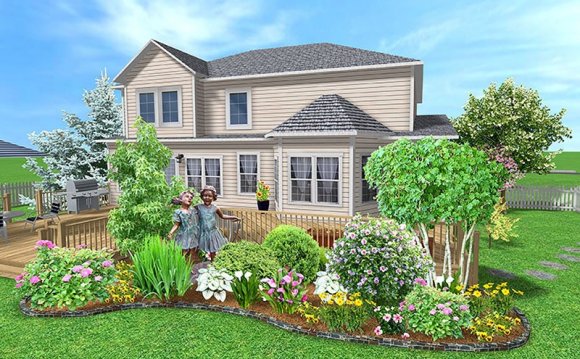
Curb appeal is all about first impressions, whether you're trying to impress prospective buyers or put a smile on your own face whenever you pull up to your house.
Try to look at your yard objectively and analyze its logic and aesthetics. Where does your eye land firston your latest horticultural mishap, a spectacular detail or nowhere at all? Is there a focal point such as a colorful herbaceous bed or specimen tree? Do the plantings complement the architecture? Is there a logical flow from sidewalk to door and from front to back? Is it obvious how to get to the main entrance? Do the various plantings and design elements feel balanced and unified? Do they form a bold, uncluttered statement? Is everything just a mess?
Identify the major problem or missed opportunity you want to address and make that the starting point for your design plan. Try these solutions:
Get a Haircut. Overgrown foundation plantings can block light from entering your house and detract from your architectural details. If you've inherited a mature landscape with your house, start by giving the leggy shrubs a haircut, removing dead or diseased plants, and splitting clumps of perennials and transplanting them to border beds.
Create a Focal Point. Whether it's a traditional lawn with blooming borders, a streamlined contemporary garden, or a formal garden with strong architectural lines, every outdoor space needs a focal point that tells the eye where to look first. This element can be almost anythingspecimen tree, sculpture, patterned hardscape, a perfect bench, fountain, you name itas long as it's bold enough to set the tone for the rest of the design. "One loud exclamation point, like one anchoring tree, helps make sense of everything, " says Risa Edelstein, president of the Ecological Landscaping Association.
Mix It Up. The shrubs in your front yard don't have to all hug the house, especially if you have a home with low foundation walls, and they don't have to be traditional evergreens. Try planting a deep border of evergreens interspersed with flowering shrubs. Group plants by height and then layer the groupings for visual interest. If you have an older home with a high foundation, you probably still want to hide that expanse of lower wall with plantings, but make sure they're at least three feet from the foundation to prevent moisture issues with your house.
Traffic stats














